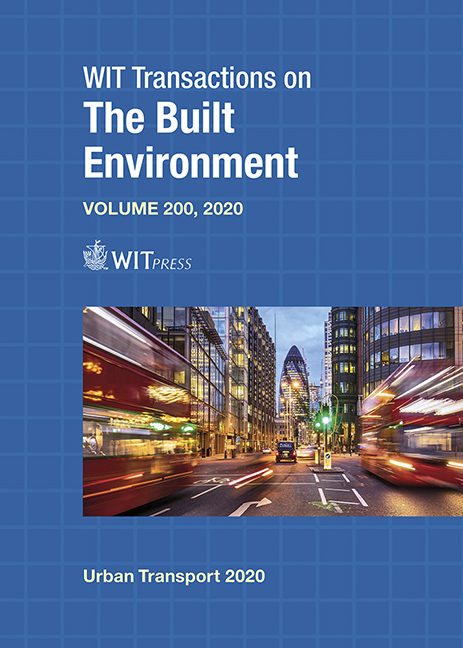URBAN MOBILITY AND QUALITY OF PUBLIC SPACES: THE CASE OF GRANADA, SPAIN
Price
Free (open access)
Transaction
Volume
200
Pages
12
Page Range
37 - 48
Published
2020
Paper DOI
10.2495/UT200041
Copyright
© 2020 A. L. Grindlay published by WIT Press under CCBY4.0
Author(s)
ALEJANDRO L. GRINDLAY, GABRIELA OCHOA-COVARRUBIAS, CARMEN LIZÁRRAGA
Abstract
Different forms of urban mobility have very different impacts on the urban environment and on the quality of the public spaces around them, from the “soft” pedestrian walkways and cycle paths, through the several modes of public transport to the extremely impactful mass use of private vehicles. This paper first analyses the different urban impacts of these forms of mobility, according to their characteristics, with regard to an extensive transport literature review, and they are put into relationship with the factors promoting urban quality and liveability in line with literature on urban design in terms of activity, image and form, among others. The results of this study are contrasted with the experience demonstrated in the case of Granada’s metropolitan area, with its fairly adequate bus-based public transport system and the common mobility problems resulting from a high level of private vehicular use, i.e. congestion coupled with severe environmental pollution. However, a new light rail system (LRT) has been developed, with a major urban renewal along its track, and has proved to be very successful, in terms of the number of passengers, after its two years of operation. The LRT has the particularity of having an underground section, with three underground stations, and longer surface stretches with different cross sections, whereby the improvement in quality of public spaces along them can be evaluated. The high quality public spaces are those with no vehicular access whatsoever, providing a completely pedestrianized area, such as in the traditional urban road crossing axes in the towns, which have been completely freed from vehicles and now seem filled with people, for example Royal Street in Armilla, “Jacobo Camarero” Street in Albolote and “Blas de Otero” Avenue in Maracena, and the section along the university central campus which has no catenary.
Keywords
public transport system, sustainable mobility, urbanity, vitality, urban sustainability, LRT, Granada





